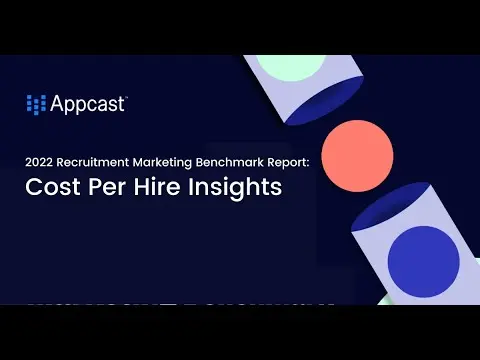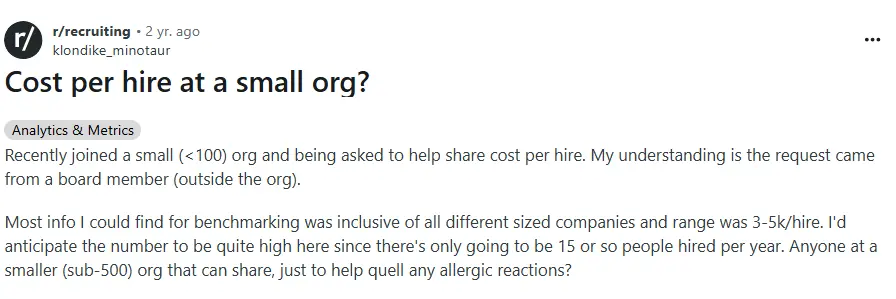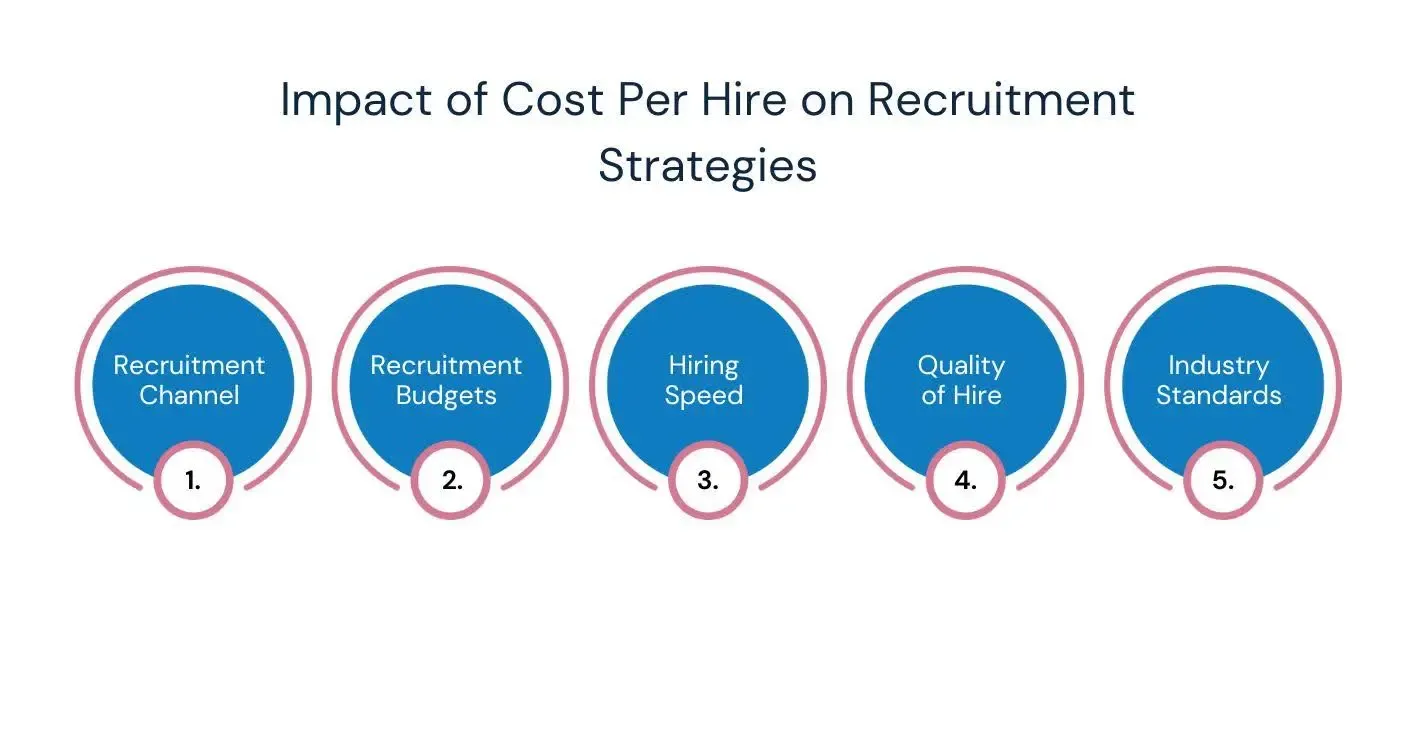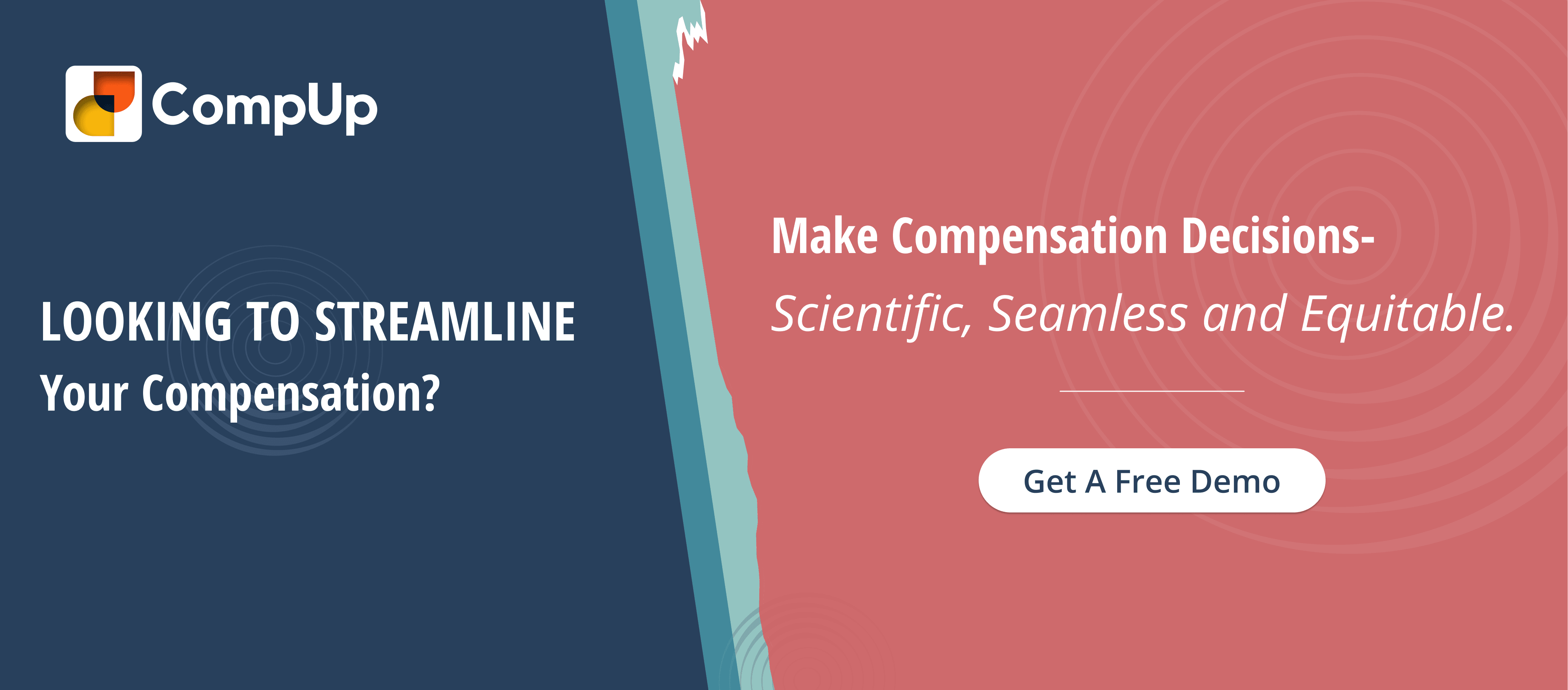
Understanding how to calculate and interpret Cost Per Hire (CPH) is essential for organizations seeking to optimize their recruitment processes and manage hiring expenses effectively. According to the Society for Human Resource Management (SHRM), the average cost per hire in the United States is approximately $4,700. However, this figure can vary significantly based on factors such as industry, role seniority, and location.
By calculating your organization's CPH, you can assess the effectiveness of your recruitment strategies and make informed decisions to optimize hiring expenses. This metric allows you to benchmark against industry standards, identify cost-saving opportunities, and ensure that your recruitment process is both efficient and effective.
In this guide, we will break down how to calculate CPH, explore its key components, and discuss how optimizing this cost can improve your recruitment strategy and overall organizational performance.
Cost Per Hire (CPH) is a key recruitment metric that represents the total cost associated with hiring a new employee. It encompasses all expenses related to the hiring process, from advertising and recruitment agency fees to interview costs and onboarding.
Cost per hire can be calculated using a simple formula:

Understanding CPH helps organizations evaluate the financial efficiency of their recruitment efforts, identify cost-saving opportunities, and ensure that their hiring processes align with their budget.
You can make informed decisions about resource allocation and improve the overall effectiveness of your recruitment strategies with CPH numbers.
From recruitment expenses to onboarding costs, each factor plays a role in determining the total investment required to bring new talent into an organization. Now, let’s explore these key elements in the next section.
Suggested Read: What is Merit Pay And How Does It Impact Salary Increases?
To accurately calculate CPH, it’s essential to break down the various costs involved in the hiring process. These costs can be divided into three main categories: direct costs, indirect costs, and onboarding costs.
Each of these categories contributes to the overall expense of hiring and plays a crucial role in understanding how efficient your recruitment process is. Next, let’s explore these components in detail.
By understanding each of these components, organizations can more accurately calculate their CPH and assess the financial impact of their hiring process. This breakdown also allows HR teams to identify areas where cost efficiencies can be realized while maintaining the quality of hires.
In the next section, we will explore additional metrics that refine cost per hire analysis and improve recruitment efficiency.
Suggested Read: Understanding What Salary Bands and Pay Bands Mean
Standard cost per hire calculations provide a baseline for recruitment expenses, but additional metrics offer deeper insights into hiring efficiency. By analyzing these factors, organizations can refine their strategies and better manage costs.
Here are two key metrics that refine cost analysis:
CPHC follows the same methodology as traditional cost per hire but focuses on standardized costs across companies. It excludes variable expenses like travel while incorporating universally relevant costs, such as job listing fees, ensuring a more accurate industry-wide comparison. CPHC ensures consistency in cost analysis by focusing on commonly shared recruitment expenses across businesses. It helps organizations accurately compare hiring efficiencies while optimizing budget allocations.
RCR measures the total cost incurred in acquiring new talent, evaluating recruitment expenses relative to new hire compensation. It provides a precise measure of recruitment investment by assessing total hiring expenditures against new hire compensation. This metric helps businesses evaluate the financial sustainability of their hiring practices and refine cost-effective recruitment strategies.
The formula is:

By analyzing CPHC and RCR, you can refine recruitment strategies, minimize unnecessary expenses, and improve overall hiring effectiveness.
Understanding these additional metrics provides deeper insight into recruitment efficiency, but knowing how to calculate cost per hire is essential for strategic decision-making. In the next section, we will break down the formula and steps to accurately determine this key hiring expense.
Calculating Cost Per Hire (CPH) is essential for understanding the financial efficiency of your recruitment process. Organizations can assess the cost of hiring each new employee and identify areas for cost optimization by calculating this metric.
Here's how to calculate CPH:
Start by collecting all the costs associated with the recruitment process. These include advertising, agency fees, HR team salaries, technology costs, interview-related expenses, onboarding costs, and any other expenses related to hiring.
To accurately calculate cost per hire, determine the total number of employees hired during the specified time period. This includes both current employees and those who joined but have since left, ensuring all recruitment efforts are accounted for. The Compensation Benchmarking feature of CompUp tracks new hires across different time frames, departments, and hiring channels, providing a clear breakdown for analysis.
Businesses can ensure an accurate count of all hires, including internal promotions and departures, improving cost-per-hire calculations. Meanwhile, Manager Execution optimizes budget allocations by offering insights into hiring trends, helping HR teams align recruitment costs with overall workforce strategy.
The basic formula for calculating CPH is as follows:

This formula divides the total cost of the hiring process by the number of hires made during a specific period (e.g., monthly, quarterly, or annually).
Example Calculation
Let’s say your organization incurred the following costs in one quarter:
Internal Costs:
External Costs:
The total recruitment costs for the quarter would be:
3,000 + 5,000 + 10,000 + 2,000 + 1,500 = 21,500
If you hired 10 employees during this period, the CPH would be:

This means your Cost Per Hire for that quarter is $2,150.
You can calculate CPH on a monthly, quarterly, or yearly basis depending on your needs. Just ensure that the costs and hires are aligned with the same time frame for accurate results.
While cost per hire is a fundamental recruitment metric, its true value lies in shaping efficient hiring strategies and financial planning. Understanding its impact allows organizations to optimize expenses, improve talent acquisition, and drive long-term workforce success. Let’s explore its significance in the next section.

Suggested Watch: This video lends deep insight into Cost Per Hire.
Understanding CPH allows businesses to balance recruitment costs with the quality of hires, ensuring that the hiring process remains cost-effective without sacrificing talent.
Here’s why measuring CPH is so important:
Monitoring CPH allows companies to attract top talent while managing recruitment costs, leading to more strategic, efficient, and financially responsible hiring practices. Now, let’s explore its role in shaping recruitment strategies in the next section.

From the Community: This thread sheds light on the cost per hire for smaller organizations (<100 employees) to provide clarity.

Understanding and calculating your Cost Per Hire (CPH) is not just about knowing how much you are spending on recruitment. It plays a critical role in shaping and refining your overall recruitment strategies.
CPH enables organizations to make data-driven decisions that optimize their hiring processes, ensuring every dollar spent contributes to attracting the right talent.
Here's how CPH impacts recruitment strategies:
CPH helps assess which recruitment channels are providing the best return on investment. If certain job boards, recruitment agencies, or social media platforms lead to higher-quality hires at a lower cost, resources can be redirected to those channels, improving efficiency.
Knowing your CPH allows you to allocate resources more effectively. If certain recruitment activities are proving to be more expensive than expected, adjustments can be made to reduce costs without compromising the quality of hires. For example, shifting from expensive job boards to more cost-effective platforms could help lower overall CPH.
By tracking CPH, organizations can also identify inefficiencies in the recruitment process. Long hiring timelines and redundant processes may inflate CPH. Streamlining the recruitment workflow or automating certain tasks can significantly reduce time-to-hire and costs, while improving the overall experience for candidates and hiring managers.
While it's essential to reduce costs, it’s equally important to ensure that quality is not compromised. CPH helps organizations find the right balance between cost savings and maintaining high hiring standards. By using CPH data to optimize recruitment processes, companies can continue to attract top talent at a sustainable cost.
By understanding your own CPH, you can compare it against industry standards or competitors. This benchmarking helps identify areas where you might be overspending and allows you to adjust your strategy accordingly to stay competitive in attracting and retaining talent.
Ultimately, understanding how CPH impacts recruitment strategies helps organizations make smarter, more informed decisions. It enables businesses to optimize their recruitment process, reduce unnecessary spending, and ultimately improve the quality and efficiency of their hires.
By applying key strategies, organizations can refine their hiring process and maximize cost efficiency. Now, let’s explore some essential tips.
Suggested Read: Understanding Massachusetts Pay Transparency Law and Wage Equity Legislation
Calculating cost per hire is essential for evaluating recruitment efficiency and managing your hiring budget. By tracking and analyzing these costs, you can optimize your hiring process. Here are some tips to help you calculate and improve your cost per hire:
It’s important to monitor your hiring costs consistently to keep them under control. Regularly reviewing expenses allows you to identify any sudden spikes and make adjustments accordingly. This ongoing examination ensures that your recruitment process stays cost-effective over time.
Assess the effectiveness of each recruitment channel you use, such as job boards, recruitment agencies, and employee referrals. By understanding which sources generate the best candidates for the lowest cost, you can allocate your resources more effectively. This also helps you avoid wasting money on underperforming sources.
Break down the cost per hire by department to better understand recruitment expenses in different areas of your organization. This analysis can reveal if some departments are more resource-intensive in their hiring process, allowing you to identify opportunities for streamlining. It also helps align recruitment strategies with departmental needs and goals.
Benchmark your cost per hire against industry averages to gauge how competitive your hiring practices are. Understanding industry standards gives you insight into where your company stands and helps you adjust if your costs are significantly higher than the average. This can also provide you with ideas for optimizing your hiring process based on best practices.
Use your cost per hire data to inform future recruitment strategies and budgeting decisions. Having accurate, up-to-date data allows you to plan effectively and allocate resources where they’ll be most beneficial. This data-driven approach makes sure that your recruitment strategy is aligned with your business goals.
Calculating cost per hire is just the first step. Using advanced tools can further enhance recruitment efficiency and budget management. With CompUp, you can gain deeper insights, streamline hiring workflows, and optimize costs effectively. Let’s explore how.
CompUp offers a suite of tools and features that enable businesses to streamline their recruitment process and significantly reduce Cost Per Hire (CPH). By integrating CompUp into your hiring strategy, you can gain real-time insights into recruitment expenses, improve efficiency, and ensure that your compensation packages are competitive while staying within budget.
Key Features to Optimize CPH:
CompUp’s Compensation Management feature automates the tracking of recruitment costs, including advertising, agency fees, HR salaries, and onboarding expenses. By consolidating this data into a unified platform, it ensures accurate and consistent CPH calculations, saving valuable time and reducing manual errors.
CompUp’s Real-Time Analytics provides detailed insights into recruitment spending by channel, campaign, and recruitment stage. This helps you quickly identify areas of overspending and take corrective actions to keep your CPH within budget.
Integrating CompUp’s Hireshot (New Hire Compensation) and Manager Execution features with your Applicant Tracking System (ATS) and other HR tools streamlines your recruitment workflow. This reduces time spent on manual processes, improving operational efficiency and directly contributing to a faster and more cost-effective hiring process.
CompUp’s Compensation Bands and Pay Equity features enable you to make data-driven decisions on compensation packages. By offering competitive yet cost-effective pay, you attract top talent without overspending, ensuring a balanced approach to recruitment costs.
With CompUp’s Compensation Benchmarking tools, you can compare your hiring costs to industry standards. This ensures you stay competitive while making informed decisions that reduce unnecessary expenses.
By integrating CompUp into your hiring strategy, you can gain real-time insights into recruitment expenses, improve efficiency, and ensure that your compensation packages are competitive while staying within budget.
Calculating and understanding your Cost Per Hire (CPH) is essential for optimizing your recruitment strategy and managing hiring expenses effectively. By accurately tracking CPH, businesses can make informed decisions about where to allocate resources, identify areas for improvement, and streamline their hiring processes.
When combined with tools like CompUp, organizations gain a comprehensive view of their recruitment costs and can implement data-driven strategies to reduce spending while attracting top-tier talent.
Ready to streamline your recruitment and optimize costs? Schedule a free demo today to explore how CompUp’s services can help you reduce your Cost Per Hire and drive a more efficient hiring process!
1. How do you calculate the cost per employee?
To calculate the cost per employee, divide the total recruitment costs by the number of employees hired during a specific period.
2. What is a good cost per hire?
A good CPH varies by industry and company size. It’s essential to benchmark against industry standards to determine if your CPH is competitive and sustainable.
3. How to calculate the hire rate?
The hire rate can be calculated by dividing the number of hires by the number of applicants and multiplying by 100 to get the percentage.
4. How does CompUp help in calculating the cost per hire?
CompUp automates the collection and analysis of hiring costs, providing real-time data to ensure accurate CPH calculations and insights for better budgeting.
5. How can CompUp reduce recruitment costs?
By streamlining the hiring process and offering data-driven insights, CompUp helps businesses optimize recruitment strategies, reducing unnecessary expenses while improving the quality of hires.

Customer Success Manager
Driven with the aim of becoming a valuable subject matter expert in the world of Total Rewards to be able to deliver exceptional customer experiences.
Revolutionizing Pay Strategies: Don't Miss Our Latest Blogs on Compensation Benchmarking